When disaster strikes—whether it’s a natural disaster, a house fire, or a sudden evacuation—the last thing you want to worry about is whether your pet’s important information is scattered or missing.
Having your pet’s records and identification organized can make all the difference in keeping them safe and ensuring they get the care they need.
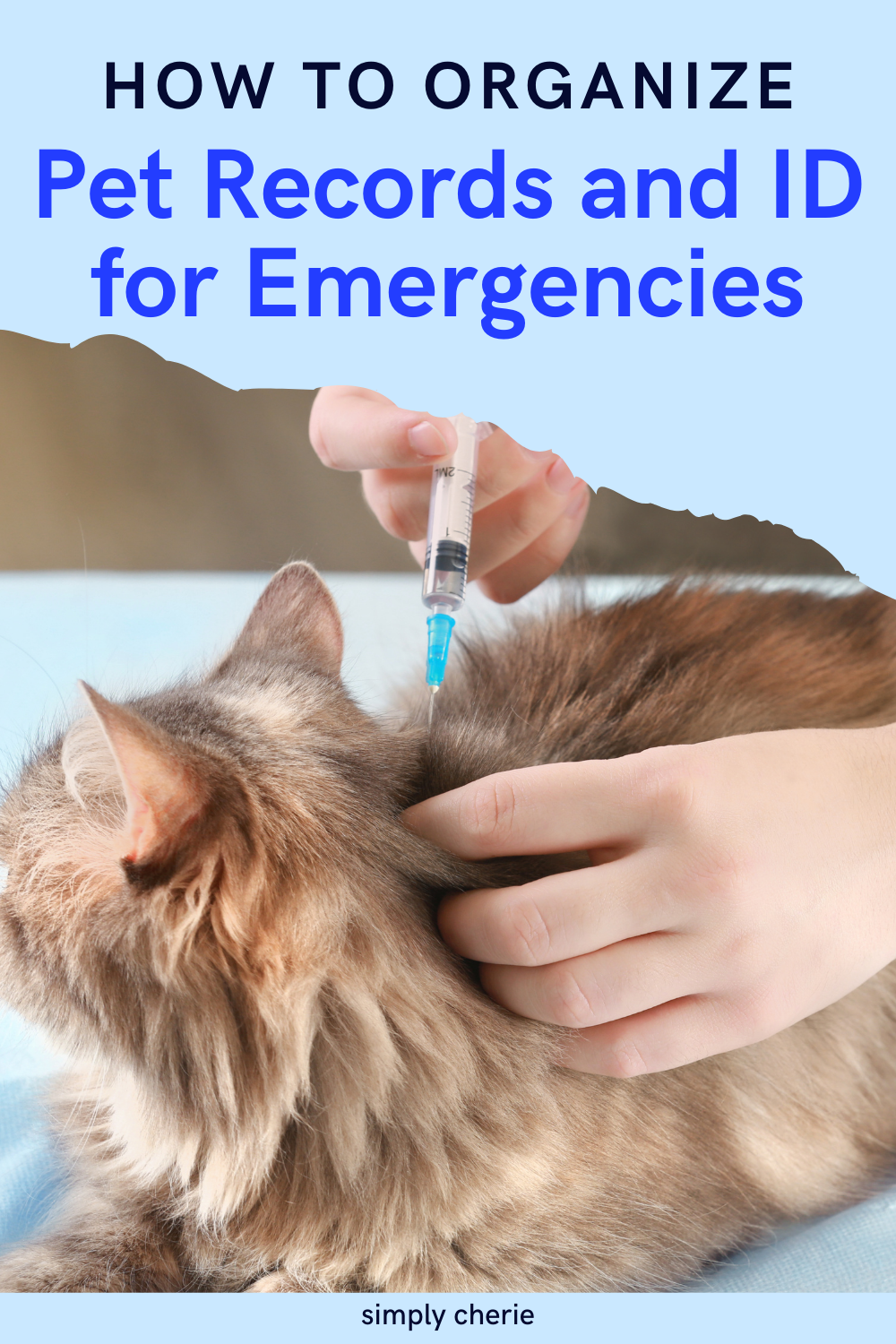
In an emergency, shelters, vets, and even neighbors who may help care for your pet will rely on accurate, up-to-date records. Here’s how to get everything in order:
1. Gather Essential Documents
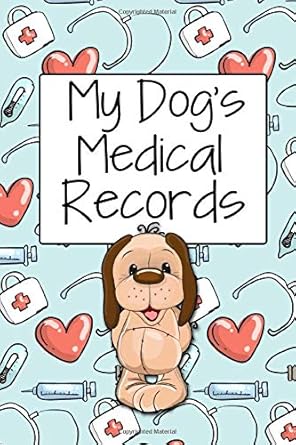
Start by pulling together all paperwork related to your pet. Think of this as your pet’s “go-bag” of records.
- Vaccination records (especially rabies, as many shelters require proof)
- Medical history (chronic conditions, allergies, medications)
- Adoption or ownership papers
- Microchip information
- Recent photo of your pet (printed and digital)
Pro Tip: Keep both a physical copy in a waterproof folder and a digital backup on your phone or cloud storage.
Having these records ready can prevent delays if your pet needs immediate medical care. A detailed medical history ensures a new vet can quickly understand your pet’s needs. This simple step reduces stress for both you and your pet during a crisis.
2. Create a Pet ID Packet
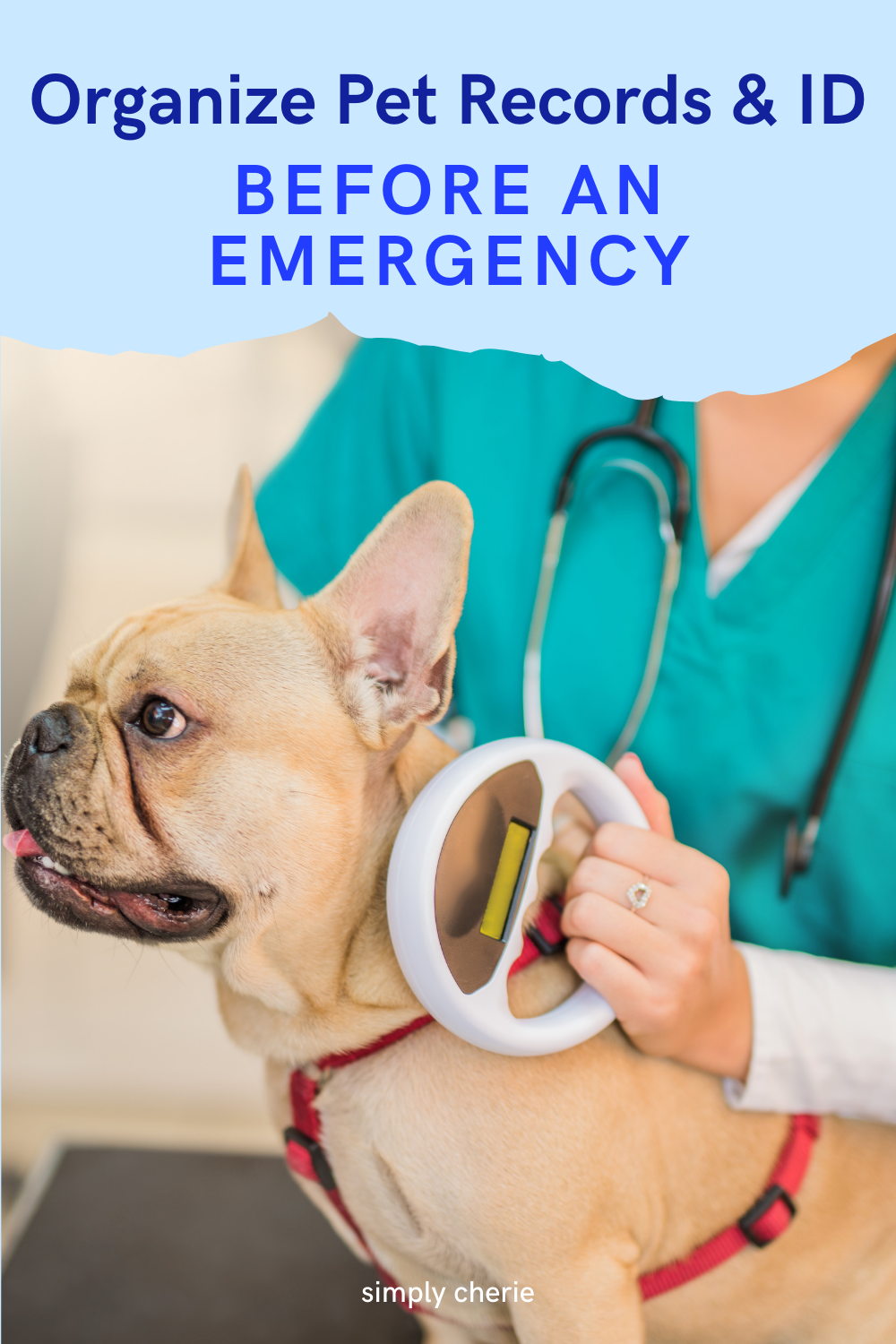
Identification is critical if you and your pet get separated. Make sure your pet always has visible and scannable ID.
- Collar with up-to-date ID tags (name, your phone number, and a backup contact)
- Microchip registered with your current information
- QR code tags that link to an online profile with medical info
Extra Step: Slip a small card in your wallet with your pet’s name, breed, and microchip number in case you’re injured and unable to communicate.
Without proper ID, even a friendly pet could end up in a shelter with no way to trace them back to you. A microchip is a permanent safeguard, but tags and cards make reunions much faster. Adding multiple layers of identification increases your chances of being reunited quickly.
3. Organize for Quick Access
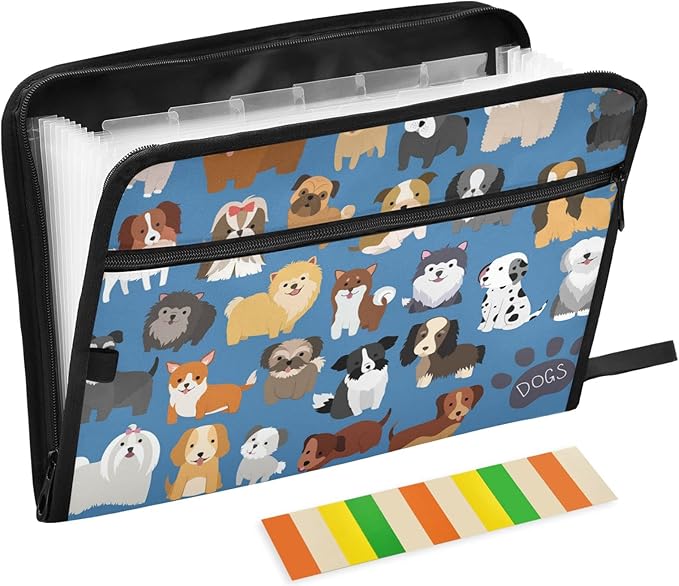
Emergencies are stressful—organization helps you act fast. Designate one spot where all pet records live.
- Use a binder with plastic sleeves or a zippered pouch
- Add a checklist at the front so you can see what’s included
- Label the outside clearly: “Pet Records – [Pet’s Name]”
Tip: Keep a duplicate set in your emergency kit or car.
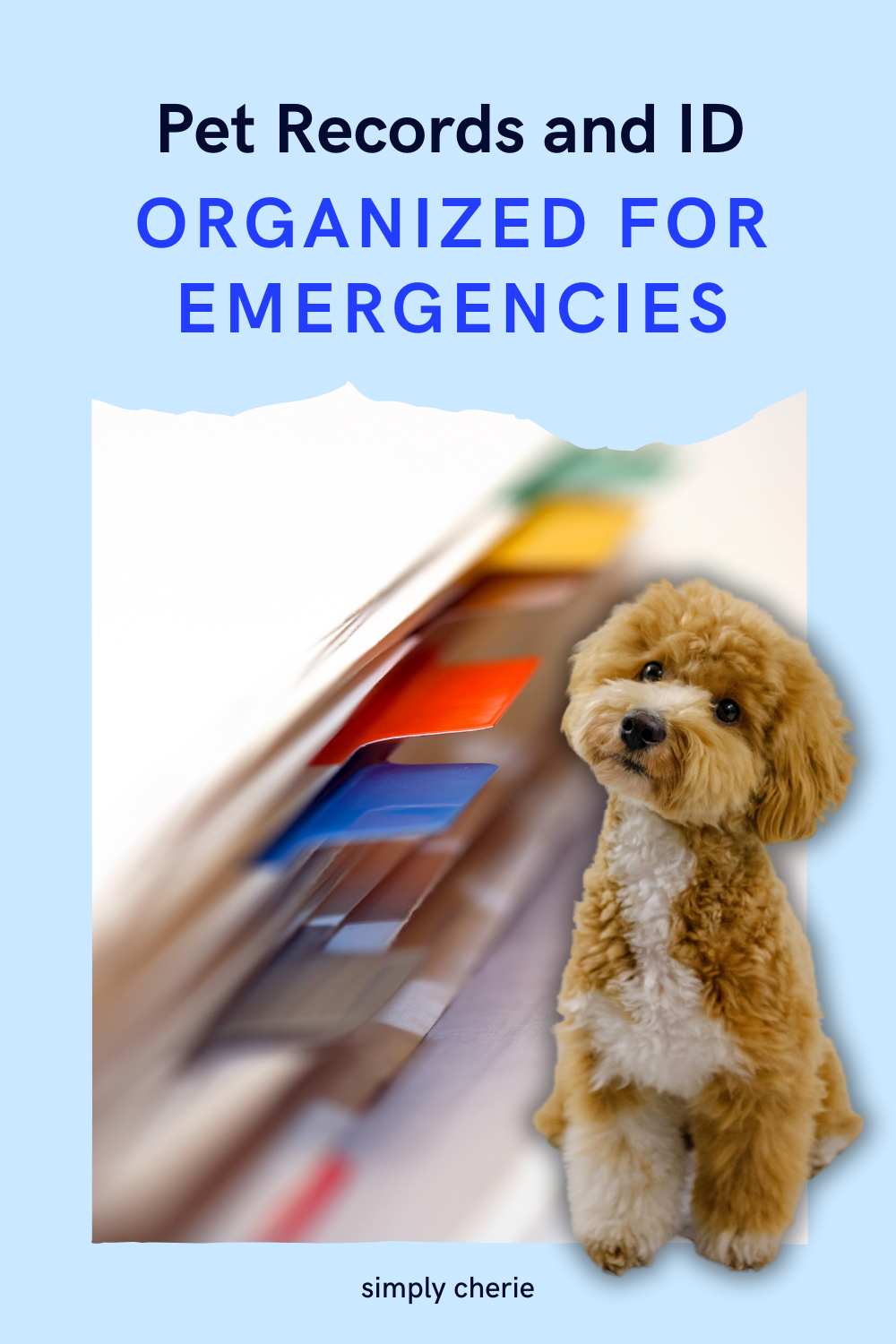
When everything has a home, you won’t waste valuable minutes searching. Even in smaller emergencies like a last-minute vet trip, having records ready makes things smoother. The goal is to make it easy for anyone—yourself or another caregiver—to grab what’s needed in seconds.
4. Digital Backups Matter

Physical records can be damaged or lost. Digital copies ensure you always have proof at your fingertips.
- Take photos of all documents and store them in a folder on your phone
- Use a password-protected app for sensitive info like vet accounts
- Share a copy with a trusted friend or family member outside your area
Digital storage also allows you to access your pet’s info while traveling. If you’re separated from your pet sitter or boarding facility, digital copies keep communication clear. Backups provide a sense of security knowing your pet’s information can never be completely lost.
5. Keep Everything Up to Date

An outdated record can cause delays in an emergency. Set reminders to review and update your pet’s records at least twice a year.
- Update microchip info when you move or change numbers
- Add new vaccinations or medications immediately
- Replace old photos with recent ones
Making updates part of your yearly routine helps prevent overlooked details. Even small changes—like a new phone number—can be the difference between reunion or confusion. Treat your pet’s record system as a living document that grows with their needs.
Final Thoughts
Emergencies are unpredictable, but your pet’s safety doesn’t have to be left to chance. By organizing pet records and identification ahead of time, you’ll have peace of mind knowing you can act quickly when it matters most.
Take the time now to put together your pet’s ID packet and records—your future self (and your furry friend) will thank you. Staying prepared means less stress for you and more security for the pets who depend on you. Organization isn’t just about neatness—it’s about protection and love in action.
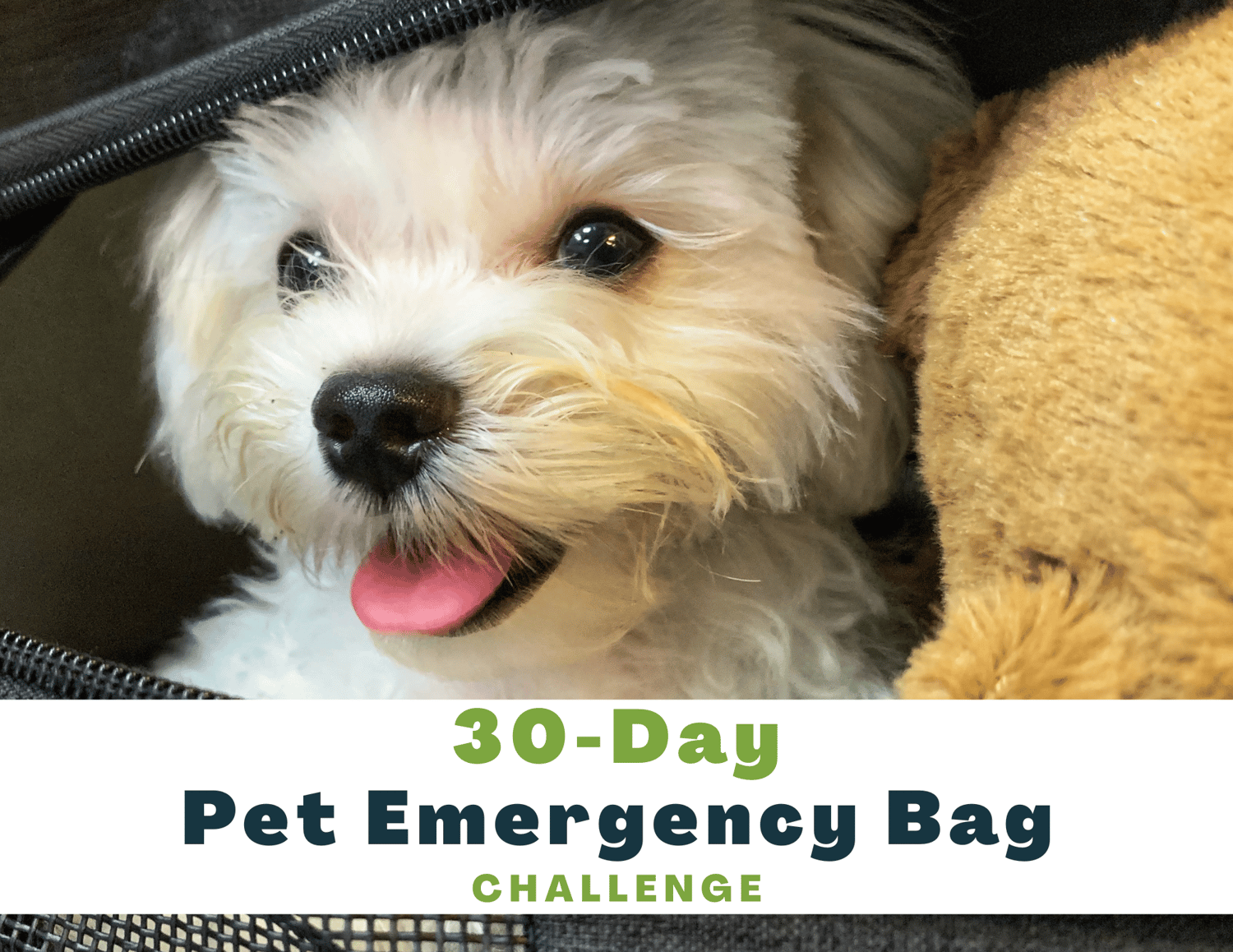
If you’d like to go beyond just organizing paperwork and create a complete Pet Emergency Kit, make sure it includes food, water, medical supplies, and comfort items—along with these important records and identification. Having everything ready in one place means you won’t be scrambling when time is short. Taking these steps now gives you confidence and peace of mind, knowing your pet will be protected no matter what comes your way.
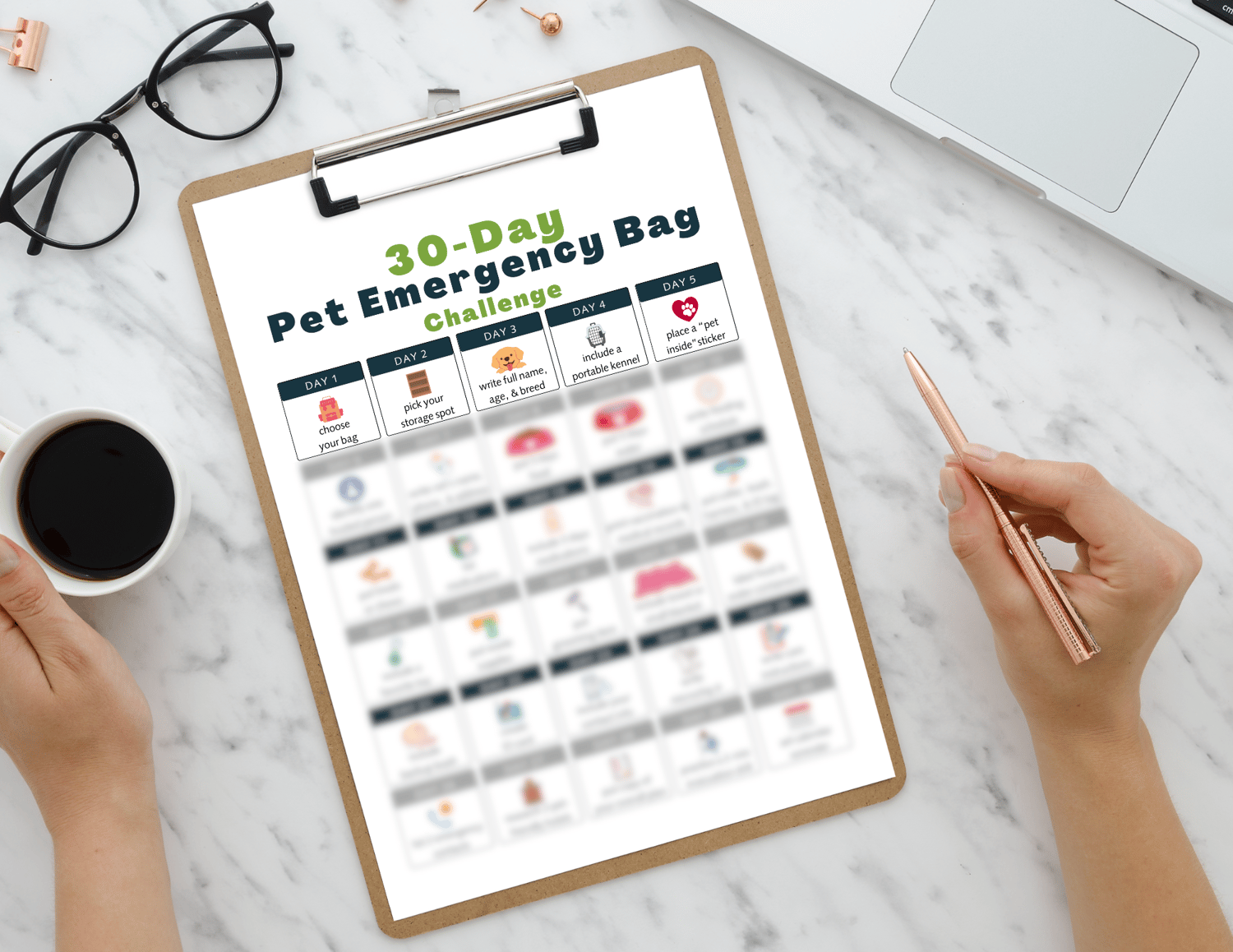
You may also enjoy these:
This post may contain affiliate links, which means I may earn a commission if you purchase through them (at no extra cost to you!) Portions of this content may be generated by AI.


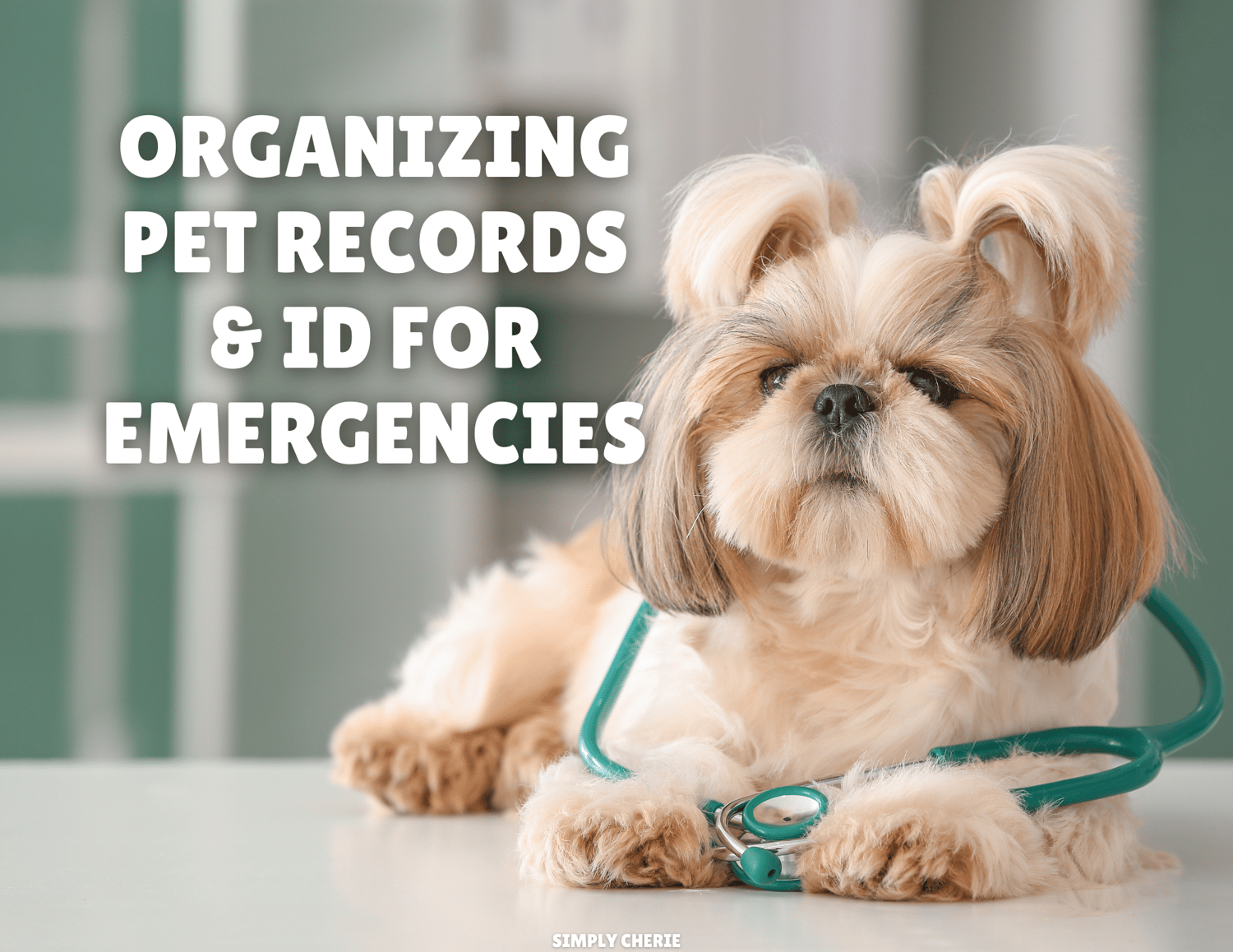
Comments ()